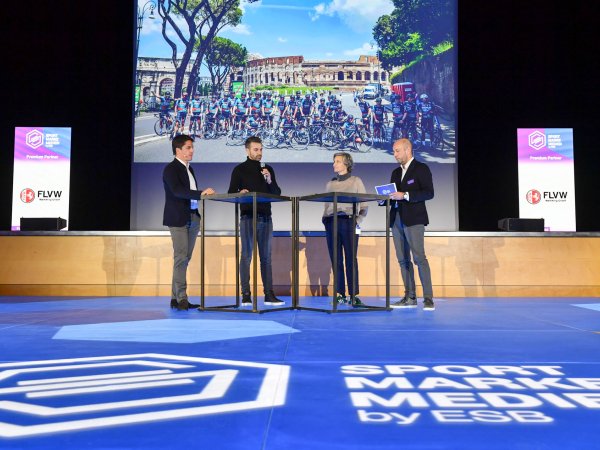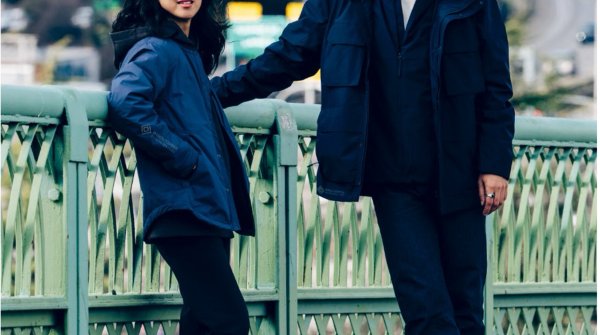At a company like Volkswagen Group, handling sponsorship requests is not a casual task and takes its time. Moritz Breuer, who manages Sponsoring Partnerships at the group level, says he handles just one or two requests each day.But not every proposal makes it through the first filter. He mentions
First of all, it’s about relevance, of course.
That means aligning each request with the specific brand territories within the group. For example, Skoda is closely tied to cycling, and VW focuses on football. If an idea doesn't match a brand’s strategic focus, it’s politely declined.
Moritz plays a key role in screening incoming proposals. Once he identifies relevance to a particular brand, he forwards the request to the respective brand team. He explains
We as a group do not appear in advertising at all, but these are always the respective brands, which then enter the sponsoring and then also activate.
To avoid overlap and maintain clarity across all brands, Volkswagen has created a unified framework called the “Sponsoring House". This internal structure ensures that multiple brands don’t accidentally pursue the same partners or sponsorship areas. It also helps prevent confusion in brand messaging.
Even when ideas come from personal passion, Volkswagen still prioritizes strategy. Moritz emphasizes
The most important thing is strategic fit, not just emotional connection. Relevance always comes first.
This system allows the group to stay organized, focused, and effective in a world flooded with sponsorship opportunities. In the end, it’s not about how exciting a proposal sounds, it’s about how well it fits the brand’s long-term goals.
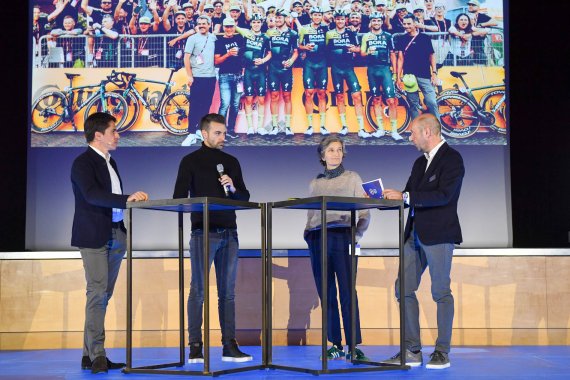
When BORA began looking at sponsorships in 2015, it wasn't the giant it is today. The brand was just five years old, and any investment had to count. At first glance, it might seem like CEO Willi Bruckbauer's love for cycling played a major role. After all, he had been an amateur cyclist into his 20s. But according to Heide Sahl, BORA’s Sponsorship Head, the final decision was made with more head than heart. She recalls looking at everything, including football.
Agencies were asked to submit offers that aligned with the company’s tight budget and global growth goals. What they found was surprising that with BORA's budget, the brand would’ve only made it into the second Bundesliga. Heide explains
That wasn’t going to help us build international awareness.
Other options, such as the Four Hills ski tour, seemed appealing but lacked year-round visibility because it only runs a few weeks a year.
Cycling, on the other hand, offered broad international appeal, consistent visibility, and strong storytelling potential, especially for a company headquartered in the Alps. Heide emphasizes
We needed something that lasted all year, not just for a few weeks. And cycling gave us that.
So while personal passion helped inform the choice, the decision was driven by clear strategic thinking. Heide concludes
We didn’t just follow a feeling. We followed the data and our goals.
Thomas Rohregger from Lidl put it simply
Everyone already knows our logo. Awareness isn't our goal anymore.
With brand visibility already maxed out, Lidl’s focus has shifted from recognition to emotional connection. Their aim? To create moments that bring the brand closer to people’s hearts, not just their shopping carts. Thomas explains
We want to go into this emotionalization.
He points to the Lidl Kids Team during the European Football Championship as a prime example. Watching kids interact with soccer stars like Christiano Ronaldo from Portugal or Kylian Mbappé from France delivered the kind of priceless emotion that a banner ad can’t.
For Lidl, these efforts are not just about short-term promotions. They’re part of a broader brand mission. Thomas remarks
We want to inspire young people, show social responsibility, and build real relationships with the next generation.
The company sees itself not only as a retailer, but also as a social actor. With 375,000 employees and reach across Europe, Lidl believes in giving back and creating shared experiences, especially when it comes to health, sports, and children.
Even though they measure KPIs like anyone else, emotional resonance is now just as important. Thomas adds
Yes, we track performance. But in our case, emotional impact and long-term brand building matter more than short-term sales spikes.
This shift represents a broader trend: big brands are learning that it’s no longer about being seen, it’s about being felt.
All three companies on stage agreed: justifying sponsorship spends is essential. But how they measure it varies widely depending on brand, product and market.
As mentioned before, Lidl sets KPIs in advance, tracking both quantitative and qualitative results.
BORA, being a younger brand with a niche product line, takes a hands-on approach.Their focus is to see not just how often the logo is shown, but what people actually associate with the brand after seeing it. Heide shares
We track media exposure and conduct impact studies every two years. [...] Visibility is good, but we want to know if it's effective.
Meanwhile, Volkswagen is developing a more advanced system. Moritz explains how they’ve partnered with the Sports People to build a sales funnel-based sponsorship model. This maps every level, from awareness to lead generation, against smart KPIs. Their model includes both freely available data and internal research, tailored to different brand needs. For example, Porsche might need different indicators than VW or Skoda. Moritz reveals
We’re trying to connect what we see in the media with what we experience in the sales process. [...] We’re not just trying to calculate media value. We’re trying to understand the actual business impact.
Across the board, the message is clear: you can’t manage what you don’t measure, and in today’s market, measurement is evolving fast
Want to be the first to find out the latest insights from the sports industry?
Then subscribe to our free newsletter now and always be one step ahead.
Sponsorships don’t just shape how a brand is seen from the outside, they affect the inside, too. Employer branding and employee engagement are the key benefits of a smart sponsorship strategy.
At Lidl, with 375,000 employees, the impact is huge. Sponsorships are used to create internal pride and foster a shared culture. Lidl even involves employees directly by offering access to events, like race visits and internal tours.
BORA hosts employee events at major races, helping staff feel part of the story. It’s not just about promoting externally, it’s about creating pride within the organization. Heide mentions
We stand for a sporty, healthy lifestyle. That matters to potential new hires.
One unique initiative BORA runs is their “wildcard system" for former athletes. Because many sports professionals haven't had time to finish traditional education, BORA offers a shortened trainee program to help them transition into corporate life. Heide explains, that this is a great way to connect values and career paths.
Even Volkswagen sees the value in internal alignment. Moritz mentions that employee buy-in is crucial, especially during uncertain times. He adds
If people internally understand and accept the purpose of a sponsorship, it becomes powerful.
Whether it’s driving culture, recruiting talent, or simply boosting pride, all three brands agree: sponsorship is no longer just an internal marketing tool, it’s a force for internal connection, too.
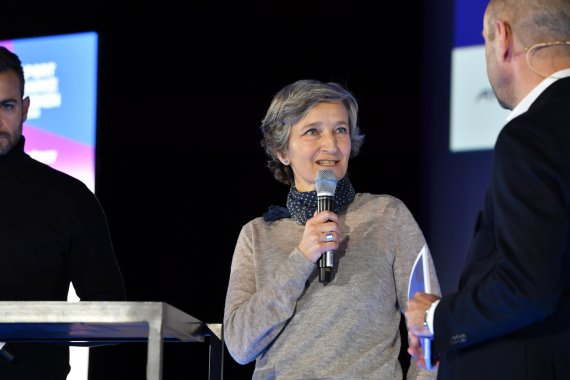
As the panel wrapped up, the conversation turned to the future, and the challenges brands face in a changing landscape.
Moritz from Volkswagen laid out three key themes:
- First, the need to spot emerging platforms early, especially in entertainment-driven areas of football and tennis.
- Second, improving cost efficiency across all sponsorships.
- Third, building stronger evaluation models to link sponsorship more closely with business goals.
He emphasized that these changes aren’t optional. He emphasizes
With budgets under pressure, we have to make every euro count.
Thomas from Lidl pointed to the surge in requests after their Euro campaign
The number of inquiries exploded. But the budget didn’t.
That means even good proposals might be turned down if they don’t align tightly with Lidl’s evolving strategy.
Heide believes that tracking results across different countries is becoming more important. She explains
Cycling works great in some markets, not in others. We need to adapt based on geography.
She also touched on BORA’s new ownership structure: Red Bull has taken a majority stake in their cycling team. While the change hasn’t affected day-to-day operations, Heide says it’s a “game changer” for the sport and that it shows that major players see value in cycling.
What unites all three panelists is a shared belief: future sponsorships will require greater precision, more agility, and deeper integration into brand strategy.
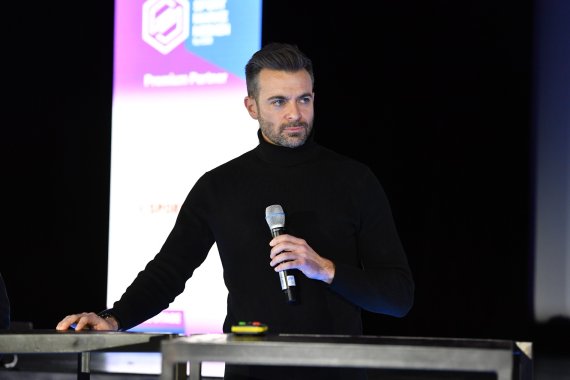
The insights shared by Volkswagen, Lidl, and BORA highlight how far the world of sports sponsorship has come. What used to be a mix of gut feeling and hopeful exposure is now a careful blend of strategy, data, and emotional intelligence.
Each company showcased a unique path. Volkswagen is building technical measurement tools tied to their sales funnel. Lidl is pursuing emotional depth and social impact. BORA is balancing international visibility with meaningful employee engagement. But they all agree on one thing: sponsorship is no longer just a branding exercise, it’s a business decision.
When done right, it boosts image, builds loyalty, inspires staff, and aligns with long-term goals. But it requires clarity, courage, and commitment. In today’s world, sponsorships don’t just need to be seen. They need to be felt, and they need to deliver.
If you want to learn more about authentic sponsorships and how to actually connect sports, brands and media successfully, SPORT BRAND MEDIA by ESB Marketingnetzwerk is the ideal platform for you. The conference offers exclusive insights from leading brands, best practices and great networking oppurtunities, as it promotes the exchange between media, sponsors, outfitters, service providers and start-ups. By doing so, it creates a platform for new impulses and innovations in the sports sector. Be there and shape the future of sports marketing!. The conference takes place from 01 - 02 DEC. at ISPO 2025. Be there!
- Strategic Fit First: Sponsorship requests must align with brand strategy and positioning – relevance always outweighs emotional appeal.
Beyond Awareness: For mature brands, sponsorship is less about visibility and more about emotional connection, authenticity, and long-term brand building.
Smart Investment Choices: Younger brands focus on channels that provide year-round visibility and international reach rather than short-lived exposure.
Measuring What Matters: KPIs are evolving – from pure media value to business impact, sales funnel alignment, and emotional resonance.
Employee Engagement: Sponsorship strengthens employer branding, inspires internal pride, and supports recruiting by aligning company values with lifestyle.
The Sponsorship House Approach: Large groups need clear frameworks to avoid overlap, create synergy, and maintain consistent messaging.
Future Outlook: Data-driven evaluation, cost efficiency, and agility in spotting emerging platforms will define the next generation of sponsorships.
Global Adaptation: Effectiveness varies by market – strategies must adapt across geographies and audiences for maximum impact.
Beyond External Impact: Sponsorships are equally valuable internally, fostering culture, loyalty, and talent attraction.
From Logo to Legacy: Sponsorship today isn’t about being seen, but about creating lasting value, emotional relevance, and measurable business outcomes.
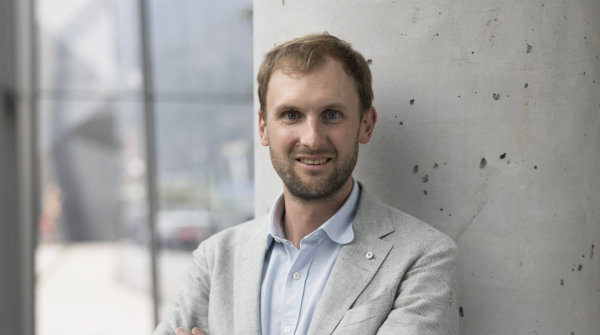
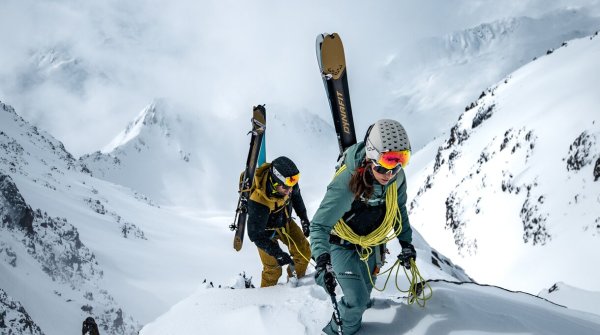 Sports BusinessSki Mountaineering Goes Olympic: What Milano-Cortina 2026 Means
Sports BusinessSki Mountaineering Goes Olympic: What Milano-Cortina 2026 Means
- ISPO awards
- Mountain sports
- Bike
- Design
- Retail
- Fitness
- Health
- ISPO Job Market
- ISPO Munich
- ISPO Shanghai
- Running
- Brands
- Sustainability
- Olympia
- OutDoor
- Promotion
- Sports Business
- ISPO Textrends
- Triathlon
- Water sports
- Winter sports
- eSports
- SportsTech
- OutDoor by ISPO
- Heroes
- Transformation
- Sport Fashion
- Urban Culture
- Challenges of a CEO
- Trade fairs
- Sports
- Find the Balance
- Product reviews
- Newsletter Exclusive Area
- Magazine
